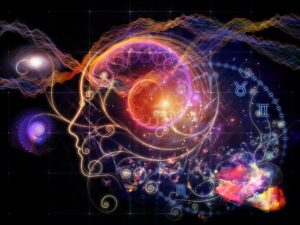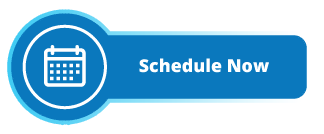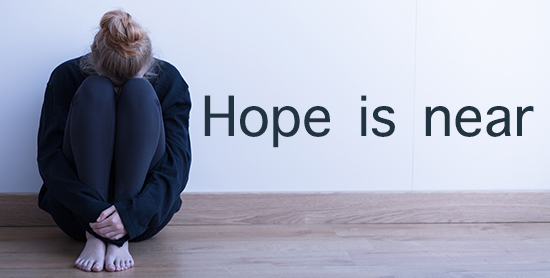 It is well known that pain is “created” on the brain. In acute wounds, our skin receptors pick up on the changes in temperature, pressure, etc., and tell the brain, which transforms it into a pain signal. In chronic pain, there may be inflammation of the joints which the brain process as painful too, other times it may have a strictly neuropathic origin, either way, the brain is a crucial element in our development and persistence of pain. What happens, is that many times we do not know WHY we have it. Physically, things may seem okay, however, this may serve as an indicator of something going on with your unconscious mind. Even if you cannot remember or know where it’s stemming from, our bodies have memory and they store emotions. Even if there is no current threat at the moment, our subconscious is still running and telling us about a potential threat.
It is well known that pain is “created” on the brain. In acute wounds, our skin receptors pick up on the changes in temperature, pressure, etc., and tell the brain, which transforms it into a pain signal. In chronic pain, there may be inflammation of the joints which the brain process as painful too, other times it may have a strictly neuropathic origin, either way, the brain is a crucial element in our development and persistence of pain. What happens, is that many times we do not know WHY we have it. Physically, things may seem okay, however, this may serve as an indicator of something going on with your unconscious mind. Even if you cannot remember or know where it’s stemming from, our bodies have memory and they store emotions. Even if there is no current threat at the moment, our subconscious is still running and telling us about a potential threat.
Whatever the origin is, what happens with chronic pain is that we enter a state of alarm that perpetuates that pain. We become hypervigilant, therefore strengthening those neural pathways that are signaling pain. When we are in pain, a subconscious pattern takes over and we feed more and more than pain, because after all, it is there! Sometimes it is the only thing we can think about all day long. No matter what we do, it is there, it is impossible not to feel it, it drains us, and therefore, we can’t help it but give it more attention, see if it’s getting worse, check the internet about it, talk about it with our friends or family, dwell about it, go to Doctor’s appointments to try to figure it out, have tests done… the pain literally becomes the center of our life. And the more it takes over, the more this vicious cycle gets strengthened.
It is extremely difficult not to drive attention to it, when it’s literally getting in the way of your daily life, how could you possibly not think about it? In some cases, you may have to stop working, or in my case, I had to take a break from school for a few years and I dedicated myself exclusively to trying to heal. However, there were things I could’ve done differently to help myself heal faster. For example, I kept checking out my vulva a few times a day with a mirror to make sure there were no changes. Oh, this came to be not only from the pain, but a gynecologist said that I could possibly have lichen sclerosus and I got really freaked out thinking my vulva could start changing at any time, or maybe it was already doing so and I had not realized! So there was I, young Miriam in her early-mid 20s checking her vulva daily; as if gazing my vulva would prevent any changes from happening. I did not have LS, it was vulvodynia, however, that wrong diagnosis skyrocketed my anxiety. And the more I looked at my vulva, the more I fed the feeling of unsafety to my brain. Another one was reading forums and checking online for other people’s experiences and articles. While there were some optimistic stories, what I mostly encountered were the stories of the people who did not heal. But uh oh, the information available online was biased! Why? Well, when you recover and you’re happy and healthy, you rarely go back to the same forums, support groups etc., and talk about your experience. A few people do, but most go on with their lives without looking back! So what do we encounter? People that are still in pain and that need a place to share their suffering. Therefore, we will always find many more stories of people who still have it, than success stories. That created even more anxiety in me. I kept reading about women who couldn’t work because of it, and I was wondering what I would do the rest of my life, being still young, single (for some, their husbands could support them, for me, that would have to be my parents if anything — for the rest of my life??), and being in a level of pain that held me back from even going for a light walk, let alone doing a full shift at work! That only made me spiral down and eventually, I started developing other symptoms, like the numbing of the right half of my body, which brought me to the ER a few times. Several neurological tests allowed me to calm down a little, knowing there was no neurological damage. Eventually, I had to set the boundary with myself of not looking at my vulva anymore for a period of time, and not reading any more stories online on vulvodynia. I felt tempted to do it, but that couldn’t go on, those actions were feeding my pain, so as challenging as it was, I stopped completely.
Why is this important? Because your mind has much greater power than you think. It will give you more of what you feed it, and the subconscious programming running in the background is picking up on what you’re doing, feeling, thinking, etc. And it will act according to that. If you think you can heal, you can heal, if you think you’re doomed… well, that makes it much more challenging. If you already expect pain, your brain will keep sending it. And the more it does, the more traumatized you become, and the more traumatized, the less safety, the less safety, the more your brain will try to protect you… and how does your brain protect you? With pain! And anxiety, and anything that creates avoidant behaviors in order to help you survive.
But there is hope! You can reprogram your subconscious mind. You can create enough safety in your nervous system and in your body, that your brain doesn’t need to keep signaling pain anymore. This is why working with the nervous system, with the subconscious mind, with the emotions… is so important. We need to create a whole different inner environment in order to heal.
Healing trauma doesn’t only mean “healing cognitively things that happened to us that caused us suffering”, it means rewiring the nervous system so our brain doesn’t need to send us any more pain. It means creating so much safety and trust in our bodies and our ability to heal, that we switch off the alarm. That we don’t need to think about the pain, and the less we think about it, the more we create new neural pathways that support our new narratives where our life doesn’t revolve around our pain anymore.
There are many tools to do so, and while I love working with the vagus nerve to bring the physiological activation down, it is also important to change the programming. Doing one-on-one work can be very powerful, but there are some other things that you can start implementing, such as watching out your self-talk, learning to listen and honor your needs, and subconcious re-programming with guided hypnosis. If you’d like to know more on this topic, feel free to drop me a comment or send me a message.
Much love,
Miriam



 Complete this form to send me a message. Everything submitted through this form is fully confidential and I will reach back out to you promptly.
Complete this form to send me a message. Everything submitted through this form is fully confidential and I will reach back out to you promptly.
Great article Miriam! Thank you
Thank you for reading, glad it ressonates!